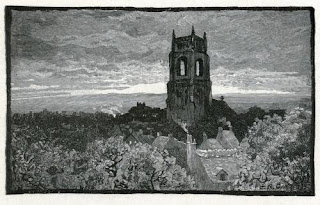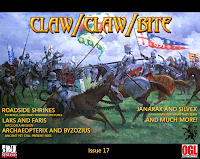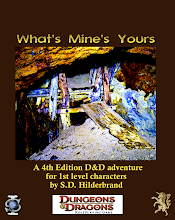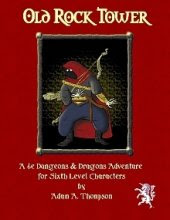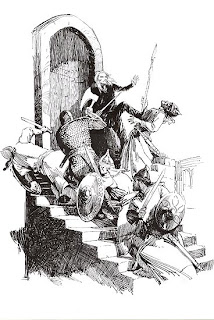
Welcome to Proppia, a fantastic land of medieval fairy tales, where knights in plate armor occupy turreted castles of stone, where struggling merchants hawk exotic wares in the town squares, where an ordinary journey becomes a dangerous adventure, where priests claim miraculous powers, alchemists bent on affecting the world mix powerful concoctions, and where scholars study arcane tomes written in long-dead languages for the secrets to powerful incantations.
Based on feudal medieval history, this world is chaotic and violent, and differs from traditional d20 worlds in that arcane and divine magic are hard for player characters to acquire and require intense in-game activity to wield. Without instant healing and three
fireball spell slots a day to ward off the many bandits, the roads and rivers are unsafe, let alone the deep wilderness with its dark denizens. In the monarchies, republics, theocracies, and military states, bribery and corruption are as commonplace as poverty and superstition. The fears and superstitions that manifest in the songs of bards and the whispers in dark corners of taverns are likely true, though often embellished when shared with the intoxicated masses.
In this midst of this general disorganization, expansionist kingdoms send their armies to ravage the countryside, strange creatures infest underground mines, thieves stalk mountain passes, witches intone loathsome curses, and various cults deliver dogmatic sermons in forest clearings as they vie for the allegiances of the people. Aggressive animals and strange creatures have reported throughout the land, especially in the forests.
The world of Proppia is inspired by Europe between the 15th and 16th centuries, covering the end of the Dark Ages, the emergence of the Renaissance, and the folk tales captured by the Brothers Grimm and others. The new ideas of the Renaissance have begun to usher in a period of change to the world. The strange, miraculous and magical elements simply reflect popular beliefs, superstitions and myths. This is an era before formal logic or widely-accepted science, a time when anything is still possible in the minds of the people. In short, if medieval Europe believed something might be true, in Proppia it may actually be true. In fact, the players are responsible for and encouraged to bring the fantastic ideas from fairy tales to life within the world. This is, after all, your story; your place to game. Make it fun.
Over the course of the campaign, you will travel across many lands, meet diverse personalities, wage war, crawl from from the ashes of battle, and discover and wield new and ancient magics. You will explore many different city and nation states, castles, hamlets, monasteries, dungeons, and a dangerous, unforgiving landscape of moors, primeval forests, and deep caverns. You will encounter unique creatures as well as those traditionally found in fantasy role playing settings. You will trip over and unwillingly discover specially-designed traps.
There are many opportunities to perform heroic deeds that live forever in the minds of the people, and that fill your purse. If you travel far and wide and accomplish enough, you will be known among Sigfried, Beowulf, Roland, Frodo, and other heroes whose stories are still told today. You may even have your story told and retold by each new generation. One of the goals of Proppia is to generate enough story material for a series of medieval fairy-tale sagas.
And so you are invited to relax your notion of the rigid rules of the 3.5 (and 4th ed) systems and enter Proppia, a world where history and fantasy meld together in a low-magic, high-adventure campaign of politics, intrigue, and mystery. Tiptoe forward from the back of the tavern and take the stage as a lead character in Proppia, and prepare yourself for a lifetime of quests and heroic adventures...
Download a draft copy of the
Proppian Player's Guide. Note that it's still in the works, but is coming along.


